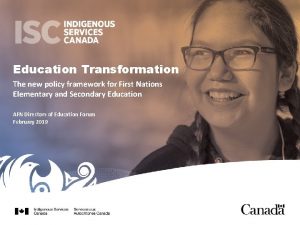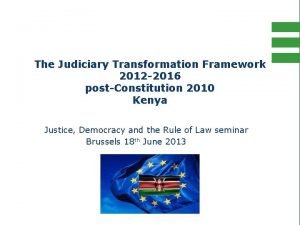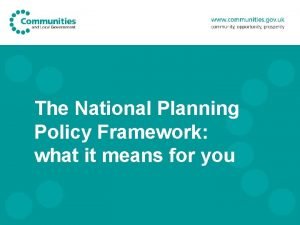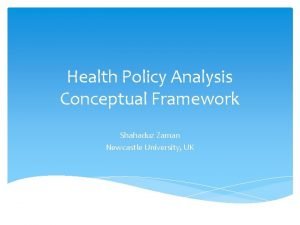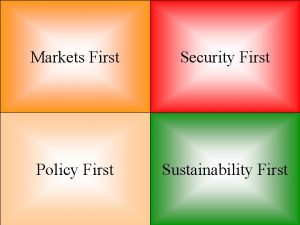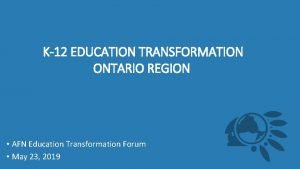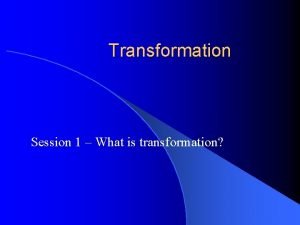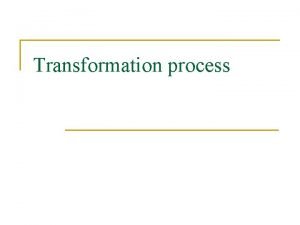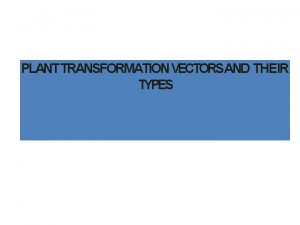Education Transformation The new policy framework for First







- Slides: 7

Education Transformation The new policy framework for First Nations Elementary and Secondary Education AFN Directors of Education Forum February 2019

Objectives of the Presentation • • • Explain the purpose of the new K-12 education policy framework Identify the key aspects of the new K-12 education policy framework Describe the new formula-based funding approach Outline the purpose of a Regional Education Agreement Identify ongoing priorities

The Co-Developed New Policy Framework • Aims to fundamentally improve the way ISC funds elementary and secondary education by Ø Increasing the transparency of ISC’s funding approach Ø Creating greater funding equity Ø Supporting regional and local diversity and respecting First Nations Control of First Nations Education Ø Working at the regional level to better respond to unique student needs and cost drivers Ø Replacing outdated proposal-based programs with improved access to predictable core funding

Key Aspects of the New Policy Framework Greater Sufficiency Ø Full investment of Budget 2016 commitments for Implementing Transformation Ø Additional funding for language and culture and full-time kindergarten at First Nations schools, as prioritized by First Nations More Predictability Ø New formula-based, regional funding models to ensure that First Nations students are supported by predictable base funding that is more directly comparable to what students in provincial schools receive Ø Less proposal-based funding with targeted multi-year funding for First Nations education organizations Regional Approaches, Strengthened First Nations Control Ø Regional technical tables to support the implementation of the new funding approach Ø Regional Education Agreements that respond to the goals and priorities of First Nations

A New Formula-based Funding Approach Beginning in April 2019, ISC will implement a series of new formula-based regional funding models for First Nations elementary and secondary education. The New Funding Formulas: • Use components of provincial funding frameworks as a base and respond to variable cost factors such as remoteness, school size, language, socio-economic conditions, and incidence rates for vulnerable students and students with special needs. • They also include additional investments in language and culture programming and up to two years of full-time kindergarten on reserve for children ages 4 and 5. Education-related funding that will remain available outside the formulas include: Ø A component of the High Cost Special Education Program; Ø Innovation and Research Programming; Ø The Education Partnerships Program.

Regional Education Agreements (REAs) What is the purpose of an REA? • To provide First Nations with the flexibility to manage education funding within their region as they see fit to support the specific needs of their communities, schools and students. These could include adult and vocational education strategies, professional development, information technology or others. • While an REA does not obligate First Nations to establish a school board, it does give First Nations the flexibility to establish a school board as their chosen governance and service delivery model. Who determines a “region”? Each “region” will be determined by First Nations and may be linked to geographic location, mutual goals and similar circumstances. A region is defined as any territory which First Nations choose to implement First Nation control of First Nation education and negotiate a regional First Nation Education Agreement. This could include, but not be limited to, a territory defined as a single First Nation, Tribal Council, Treaty affiliation, language family, or an entire province. For Treaty First Nations, only Treaty people will speak on behalf of Treaties.

Beyond K-12 Education Transformation • • Post-Secondary Education High Cost Special Education Infrastructure Northern and Remote
